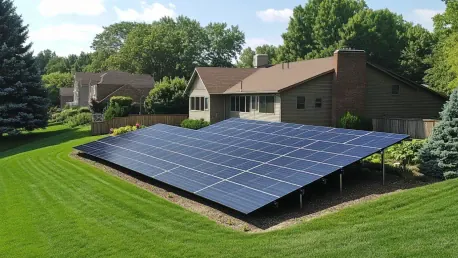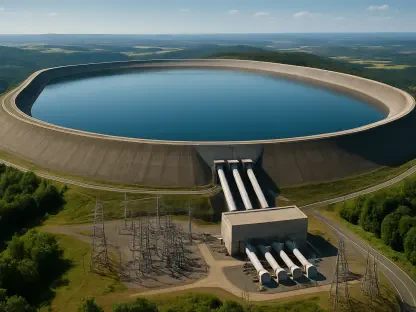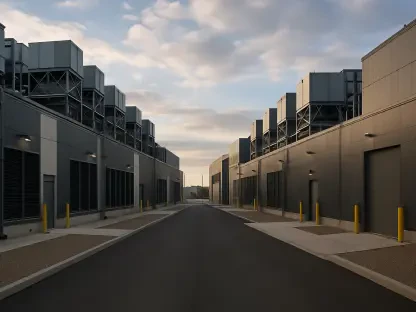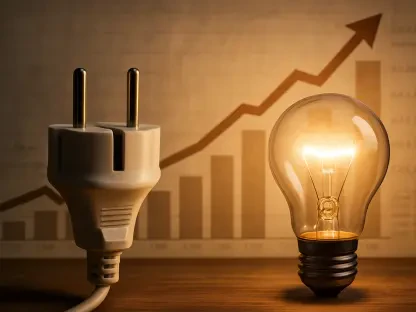Virginia’s legislative landscape concerning solar energy development presents a complex and often contrasting narrative, marked by the success of distributed solar projects and the stagnation of utility-scale solar initiatives. Virginia’s quest for increased use of clean energy is driven by the urgent need to meet rising electricity demands, particularly those from the expanding number of data centers. This pivotal journey towards a sustainable energy future involves navigating legislative victories, overcoming local opposition, and surmounting regulatory challenges.
Clean energy initiatives in Virginia encapsulate more than just environmental responsibilities—they are also about adjusting economic and social landscapes. Progress toward these ambitious goals is, however, uneven. Legislative advances in the realm of distributed solar energy have bolstered the adoption of small-scale installations such as rooftop solar panels. Meanwhile, utility-scale solar projects have been hampered by local resistance and legislative hurdles, creating significant stumbling blocks in Virginia’s renewable energy pursuits.
Challenges to Utility-Scale Solar Development
Utility-scale solar projects in Virginia face formidable resistance from local governments and community landowners, which hinders their broader adoption and integration within the state’s energy mix. County boards, heavily influenced by anti-solar fossil fuel front groups, frequently deny permits for large-scale solar installations due to concerns over the visual impact on rural landscapes, where open fields and forests would be replaced by rows of solar panels. This resistance has led to the stalling or outright defeat of legislation aimed at facilitating utility-scale solar projects.
For example, bills sponsored by Del. Rip Sullivan and Sen. Creigh Deeds aimed to prevent local jurisdictions from banning solar projects or imposing excessively restrictive measures. Unfortunately, despite their potential to streamline the approval process and promote wider deployment of utility-scale solar, these bills failed to pass the General Assembly. Consequently, local governments retain the authority to deny permits, effectively curbing the adoption of utility-scale solar energy across the state.
The strong opposition to utility-scale solar projects underscores the challenge of balancing local land use preferences with overarching state-level clean energy goals. With local governments continuing to exercise significant control over land use decisions, the path to achieving broad acceptance and implementation of utility-scale solar remains fraught with obstacles. The interplay between state ambitions and local priorities persists as a contentious and complex battleground in Virginia’s clean energy narrative.
Progress in Distributed Generation Legislation
In stark contrast to the difficulties facing utility-scale solar projects, distributed generation initiatives have gained considerable legislative traction, signaling a prominent shift towards fostering small-scale solar energy solutions. Numerous legislative bills focused on promoting rooftop solar and other minor solar installations have met with notable success, reflecting a more encouraging landscape for distributed solar energy in Virginia.
One of the key legislative successes is Del. Katrina Callsen’s HB1883, which significantly increases the carve-out for distributed solar under Dominion Energy’s renewable energy targets. This innovative bill also refines the renewable energy certificate system to better support solar projects of up to 3 MW, further incentivizing the installation of small-scale solar systems. HB1883 passed the House unanimously, demonstrating strong bipartisan support for expanding distributed solar energy.
In addition to this, legislation focused on creating a pilot program for virtual power plants (VPPs) has successfully passed in both legislative chambers. Bills such as HB2346 by Del. Phil Hernandez and SB1100 by Sen. Ghazala Hashmi aim to aggregate solar and storage resources, enabling utilities to manage peak demand more effectively. These legislative successes underscore the promising future for distributed generation and its potential to contribute meaningfully to Virginia’s clean energy objectives.
Legislative Innovations and Their Traction
Several groundbreaking bills have made significant headway in the Virginia General Assembly, signaling a deliberate push towards setting high standards for the solar industry and addressing critical aspects of workforce development. Legislators have introduced and passed several bills aimed at enhancing the quality of solar projects and fostering a skilled workforce capable of supporting the clean energy sector’s growth.
One notable example is HB2438 by Del. Candi Munyon King, which advocates for the highest standards in solar projects and has passed the House by a narrow margin. This progress indicates that even in a politically divided environment, there is room for high-quality solar initiatives to gain legislative backing. HB2438’s passage underscores the legislature’s commitment to elevating industry standards to ensure the deployment of durable and efficient solar energy solutions.
Furthermore, HB2356 by Del. King emphasizes workforce development through the creation of an apprenticeship program within the clean energy sector. Provisions in this bill ensure prevailing wages for workers, highlighting the economic benefits of transitioning to clean energy while developing a skilled and capable workforce. However, this bill faces political divisions and may undergo amendments or face potential vetoes by the governor. Nonetheless, the advancement of HB2356 reflects the crucial understanding that economic and workforce considerations are integral to Virginia’s clean energy future.
These legislative innovations and their ensuing traction illustrate a promising direction for Virginia in terms of clean energy standards and workforce development. As the state continues to confront political challenges, achieving bipartisan support for such forward-thinking initiatives is essential for the sustainable growth of its solar energy industry.
Addressing Interconnection Costs and Policy Improvements
Interconnection costs have long posed substantial barriers to the viability of solar projects, particularly on government and school buildings. Dominion Energy’s increase in these costs has exacerbated financial challenges, making it essential for legislative intervention to ensure the economic feasibility of solar initiatives.
In response, legislators have proposed a range of solutions to address the issue of interconnection costs and ensure that solar projects remain financially viable. HB2266 by Del. Kathy Tran and an amended version of SB1058 by Sen. Adam Ebbin suggest innovative measures such as spreading the costs across projects benefiting from expanded grid capacity. These measures are crucial for making solar projects more economically feasible, encouraging broader adoption, and eliminating financial barriers to entry.
Complementing these efforts is the legislation providing local governments with the authority to mandate solar installations on parking lots, such as HB2037 introduced by Del. David Bulova. Approval of this bill at the House marks a significant step towards expanding solar infrastructure, addressing practical barriers, and reinforcing Virginia’s commitment to achieving its clean energy goals.
These policy improvements aim to streamline solar energy adoption by mitigating financial impediments and enhancing the feasibility of solar projects throughout the state. Legislators’ focus on interconnection costs and the development of policy frameworks to bolster solar installations underscores their proactive approach in supporting Virginia’s transition to a more sustainable energy future.
Overarching Trends and Consensus Viewpoints
Interconnection costs have long been a significant obstacle for solar projects, especially on government and school buildings. Recently, Dominion Energy’s increased fees have heightened these financial challenges, making legislative action crucial to maintain the economic viability of solar initiatives.
In response, legislators have proposed various solutions to manage these costs and keep solar projects financially feasible. Del. Kathy Tran’s HB2266 and an amended version of Sen. Adam Ebbin’s SB1058 introduce innovative strategies like distributing interconnection costs across multiple projects benefiting from increased grid capacity. These measures are essential for making solar installations more cost-effective, encouraging wider adoption, and removing economic barriers.
Additionally, legislation aimed at empowering local governments to require solar installations on parking lots, such as Del. David Bulova’s HB2037, complements these efforts. The passage of this bill in the House signifies a crucial advancement in expanding solar infrastructure, addressing practical hurdles, and reaffirming Virginia’s commitment to its clean energy objectives.
These legislative initiatives aim to facilitate solar energy adoption by reducing financial impediments and improving project feasibility across the state. By focusing on interconnection costs and crafting supportive policy frameworks, legislators are proactively supporting Virginia’s shift towards a more sustainable energy landscape.









